You can set up any of your email accounts within Outlook, however it takes a bit of setting up and some are easier to manage than others. If you are wondering how to set up a Gmail account in Outlook then this should help you get it up and running. Whether you set it up in IMAP or POP3, the following guide will tell you exactly what you need to do to get your Gmail account set up in Outlook.
How to Set Up Gmail in Outlook
Setting Up Gmail in Outlook Using IMAP
Before you even enter anything into the settings in Outlook, you will need to go into your Gmail account from your browser and make some changes there.
- Go to your Gmail account, and click on the settings button in the right hand corner, choose Settings from the small drop down menu.
- Once you are in the Settings screen, make sure you click where it says Forwarding and POP/IMAP.
- Now Scroll down to the section called IMAP Access, and choose Enable IMAP.
NOTE: Make sure you click Save Changes at the bottom of your screen, or the changes you made will be lost.
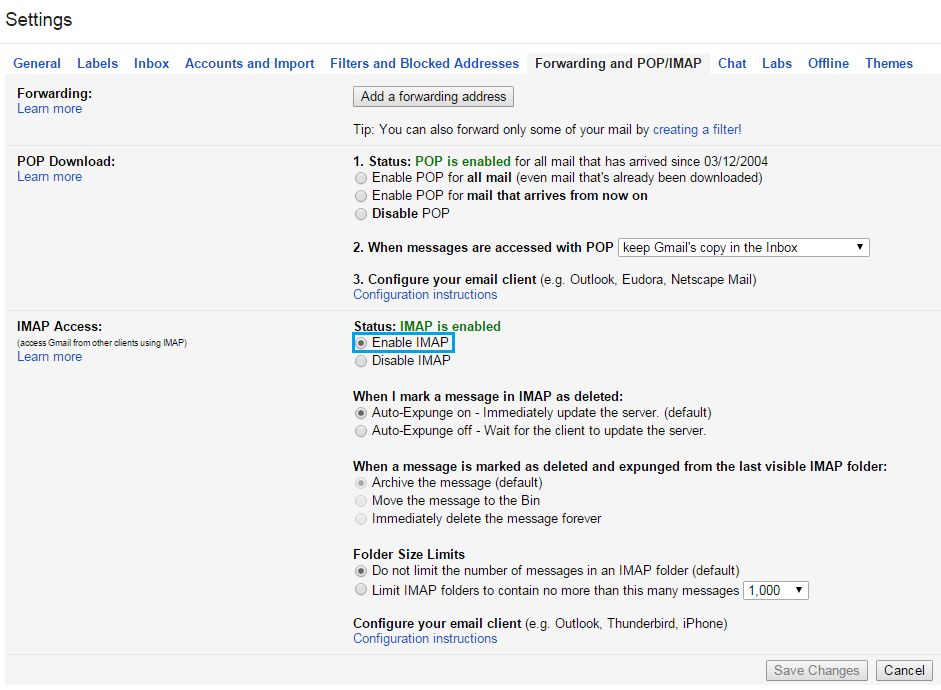
After making these changes in your Google account you can close your browser and open Outlook. Follow these steps in Outlook:
- Go to the File tab
- Under Account Information, click Add Account.
- Select Manual setup or additional server types at the bottom.
- Hit Next. It will take you to the Choose Service screen, Select POP or IMAP and then click Next again.
- Now in the POP and IMAP Account Settings you have to enter the User, Server, and the Logon Information. Select IMAP for the Account Type, and then enter the following information:
- Incoming Mail Server: imap.googlemail.com
- Outgoing Mail Server (SMTP): smtp.googlemail.com
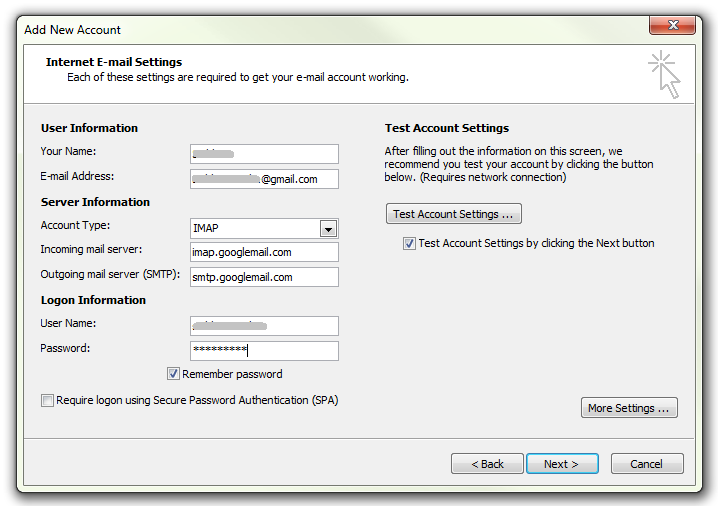
- Make sure you have entered your correct and full email address in the ‘User Name’ or ‘E-mail Address’ line, and also choose to Remember Password so that Outlook is able to automatically log you in when you’re checking your email. Click on More Settings.
- The Internet Email Settings box will open up. Click the tab that says Outgoing Server. Check the box that says My outgoing server (SMTP) requires authentication, and also make sure to select Use my settings as my incoming mail server.
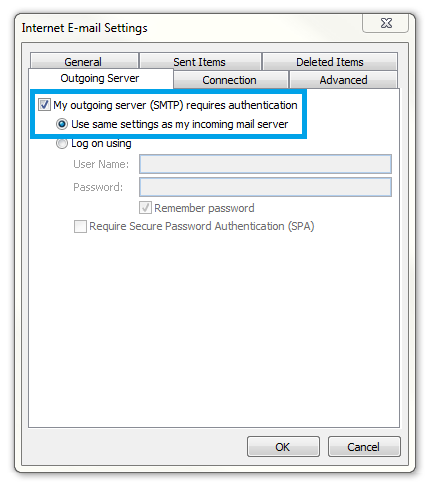
- Still in the Internet Email Settings box, go to the Advanced Enter the following information into the corresponding spaces:
- Incoming Server: 993
- Incoming server encrypted connection: SSL
- Outgoing Server: 587
- Outgoing Server encrypted connection: TL
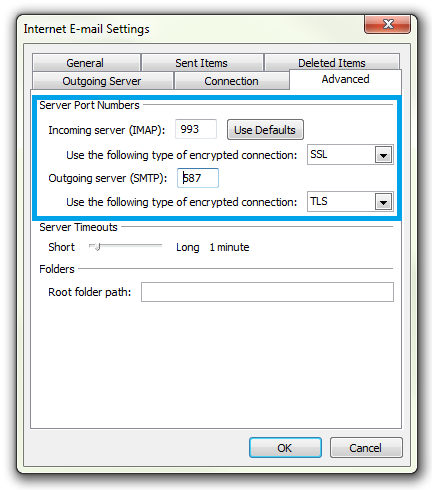
Click OK and accept all the changes you have made and then close the Internet Email Settings box. You will be back to the Add Account window, click on the button that says Next. Outlook will now test the account settings you have put in place. Once this test finishes, click on the button that says Close. A screen should show up now saying that “You’re all set”, click Finish. Your Gmail is now setup in Outlook Using IMAP.
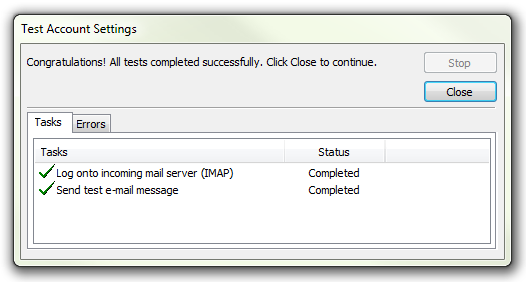
Setting Up Gmail Account in Outlook Using POP
You may need to follow the first steps in this article to check if you have your Gmail account set to POP and not IMAP. Gmail by default will use the POP protocol, so unless you’ve changed it to IMAP, you won’t need to change a single thing in your Gmail settings. Here’s what you can do in Outlook to set up your Gmail account using POP:
- Open Outlook and select the File tab. Then click on the Add Account button.
- This time try using the Auto Account Setup, which will allow Outlook to automatically configure your email account.
- Enter your name, the email address and then the password twice, hit the Next button.
- Outlook will now verify all of your settings and should complete the process. When it is done, hit the Finish button.
- Now your Gmail is setup!
Though POP3 setup seems easy, most people recommend that you set up your Gmail using IMAP, the reason being that IMAP allows for messages to be deleted directly on the server which will make it a lot more convenient to clean up your mailbox. IMAP is easier to manage both PC and Server, while POP3 may give you more work to do in the long run. If you follow the instructions, IMAP can be easily set up.
If you’re still having trouble connecting, it may have something to do with Gmail disallowing access for Outlook. Read our handy step by step guide to stop Gmail from blocking Outlook.


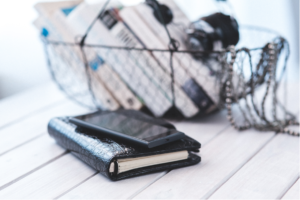
Thank you so much!!! After hours of trying to sort this problem with advice from so many others, I was lucky to find your article and it worked straight away! Thank You Thank You for easy to follow straight forward instructions. :)
I had a gmail account with my outlook.com account. It worked fine but decided to get rid of gmail. Had to redo the whole phone back to factory. I wanted just outlook on it but was told I had to have a gmail account and sync it with outlook. I tried that and all my mail by-passed outlook on my computer and when straight to my phone. I tried everything and ended up deleting my added gmail account from outlook. Can any one help me, where I get my regular outlook mail to stay in outlook but forward it to gmail on my phone.
How to configure (setup) Gmail in outlook 2010 is here. Microsoft outlook 2010 provides a very rich set of email management tools to help you better manage your emails with a cool user interface. Here we are describing the steps of How to configure (setup) Gmail in outlook 2010. Microsoft Outlook is the Most powerful and intuitive email client software.